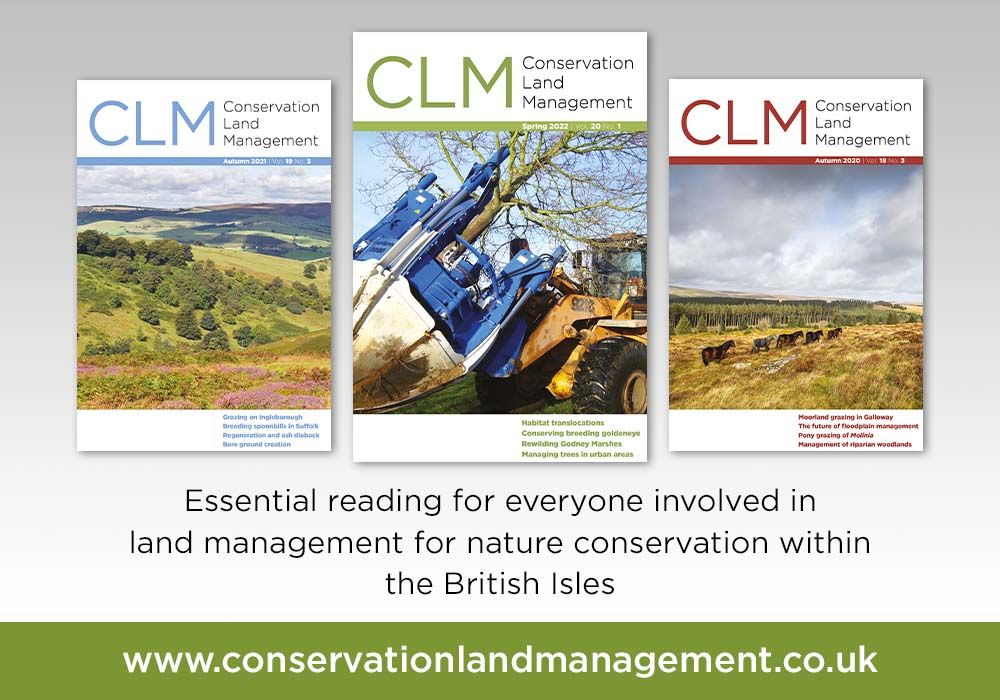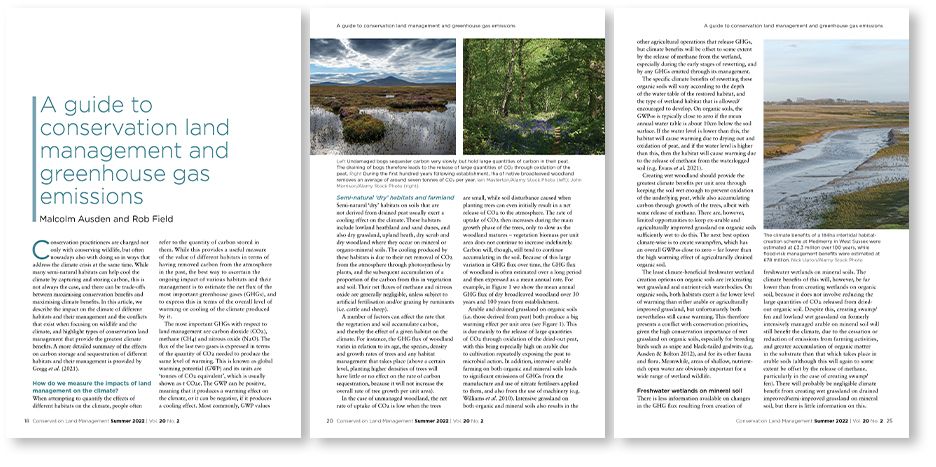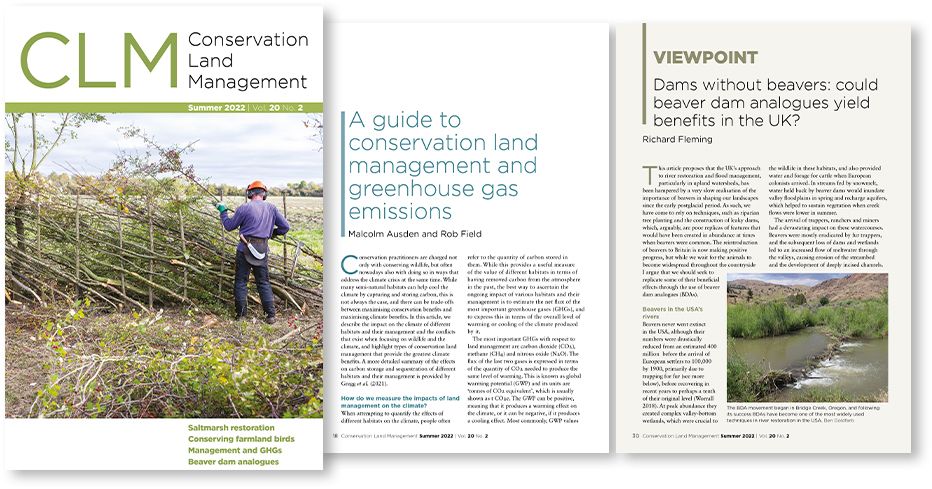Managing habitats for the benefit of wildlife can often contradict climate priorities. In the Summer 2022 issue of Conservation Land Management (CLM), Malcolm Ausden and Rob Field describe how different habitats and their maintenance impact the climate, and highlight the management practices that provide the greatest climate benefits. Here you can read a summary of the article.
Quantifying the impacts of habitat management on the climate
The influence of different habitats and their management on the climate can be measured by estimating the net flux of the most important greenhouse gases (GHGs): carbon dioxide, methane and nitrous oxide. The contribution of the latter two is usually expressed in terms of the amount of CO2 needed to produce the same level of warming (tonnes of CO2 equivalent; t CO2e), as determined by global warming potential (GWP) of the different gases. A positive GWP indicates a positive warming effect, whereas a negative GWP shows a cooling effect. GWP values are usually expressed in comparison to the warming potential of CO2 over 100 years.
The effects of conservation land management on GHG flux
In the full CLM article, the authors describe the GHG flux of the main types of habitats in Britain, and how this is affected by conservation management. The habitats included are listed below, starting with those that produce the greatest overall warming effect on the climate, and finishing with those that have a cooling effect.
- Intensive arable on organic soil
- Intensive grassland on organic soil
- Eutrophic/mesotrophic open water
- Lowland wet grassland on organic soil
- Intensive arable on mineral soil (incl. emissions from farming operations)
- Bare peat
- Oligotrophic open water
- Heather-dominated drained bog
- Intensive arable on mineral soil (excl. emissions from farming operations)
- Lowland and upland heathland
- Unimproved low-input grassland (incl. LWG on mineral soil)
- Near-natural bog
- Improved grassland (excl. emissions from farming/livestock operations)
- Near-natural fen
- Mudflat
- Conifer plantation on mineral soil (managed on a 55-year-rotation)
- Saltmarsh
- Dry broadleaved woodland (mean over first 100 years)
- Wet woodland
- Dry broadleaved woodland (mean over first 30 years)
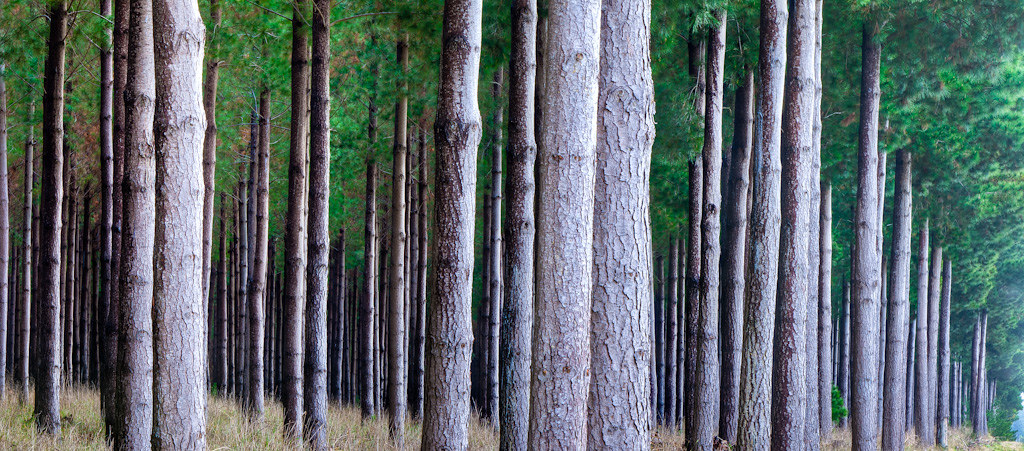
Intensive arable on organic soil (soils derived from peat) produces the biggest warming effect per unit area, as large quantities of CO2 are released via oxidation of dried-out peat that is repeatedly exposed during the cultivation process. The manufacture and use of nitrate fertilisers and the use of machinery also contributes to significant emissions of GHGs. At the other end of the spectrum is dry broadleaved woodland, particularly during the first 30 years after its establishment. The GHG flux of woodland fluctuates depending on its age, species composition, the density and growth rate of trees, and management. For unmanaged woodland, the net uptake of CO2 is low while trees are small, and planting of trees can even lead to a net release of CO2 as a result of soil disturbance. The rate of CO2 uptake increases during the main growth stage of the trees, slowing as they mature, although carbon does continue to accumulate in the soil.
Ways to benefit both the climate and wildlife
Conservation management can provide climate benefits either by reducing the amount of GHGs released into the atmosphere, or by actively removing them (i.e. carbon sequestration). For example, rewetting drained peatland reduces, and should eventually stop, the release of CO2 that occurs through the drying out and oxidation of peat. Although there is an initial release of methane after rewetting, accumulation of carbon in the peat will resume. The climate benefits per unit area of wet peatland are surprisingly low compared to some other types of habitat, but due to the large quantities of carbon stored within the vast expanse of peat in upland Britain, rewetting drained areas is an incredibly important measure to prevent the ongoing release of CO2, and will also provide a number of benefits for wildlife.
On organic soils used for arable, the greatest climate benefits per unit area come by creating wet woodland, as this prevents the oxidation of the peat and allows carbon to accumulate during tree growth. There are, however, limited opportunities to create new wet woodland on ex-arable organic soils and to keep them adequately saturated. The next best option is the creation of swamp/fen, which offers far greater climate benefits than agriculturally drained peat soils, even though the habitat itself has an overall GWP100 near to zero.

The authors look at multiple management approaches and describe the climate benefits of different types of habitat restoration and creation. All the methods listed below are beneficial for the climate, and are ordered here by the magnitude of their cooling effect, from the least to the greatest.
- Creating swamp/fen on ex-arable on mineral soil
- Rewetting drained bog
- Creating lowland wet grassland on ex-arable on mineral soil
- Creating intertidal habitat on ex-arable on mineral soil
- Establishing broadleaved woodland on ex-arable on mineral soil
- Creating lowland wet grassland on drained grassland on organic soil
- Creating swamp/fen on drained grassland on organic soil
- Creating lowland wet grassland on ex-arable on organic soil
- Creating swamp/fen on ex-arable on organic soil
- Creating wet woodland on ex-arable on organic soil
A large aspect of the management of semi-natural habitats involves cutting and clearing vegetation in order to maintain a particular vegetation structure and to slow or reverse succession. But this means that the amount of carbon accumulated in the soil and vegetation is reduced. In addition, the removal of vegetation is often carried out by using domestic livestock, which release large quantities of methane, by machinery, which is often powered by fossil fuel or biofuel and releases CO2, or by burning, which also releases CO2.
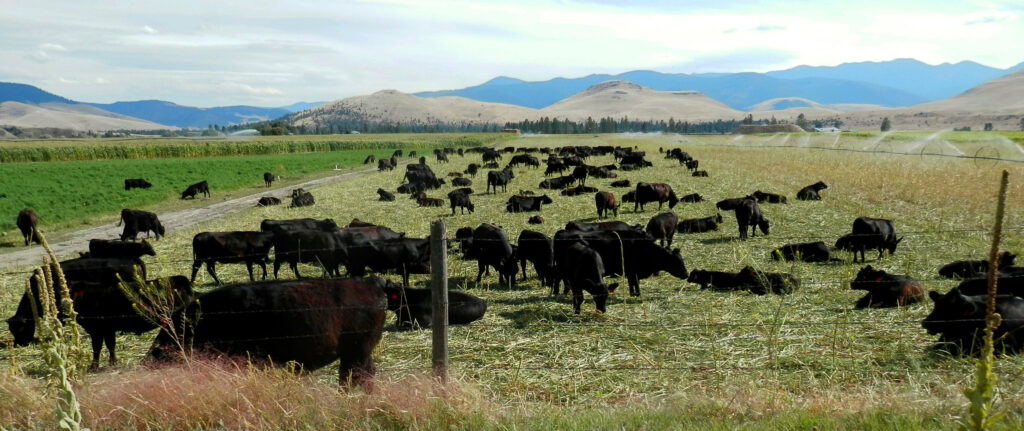
But there are changes that can be made to management that can help contribute to a habitat’s cooling effect. For example, the amount of vegetation that is removed from a site can be reduced to allow more carbon to be stored in the vegetation or soil. In some instances this can mean allowing a site, such as a swamp/fen, to develop into woodland or scrub. This can contradict conservation goals where maintaining an early successional habitat is the priority, but can be an option for sites that are currently poor for wildlife.
Another option is to change the method used to clear the vegetation. One way that this can be achieved is by swapping livestock for grazers that release less methane per quantity of vegetation removed. Ponies, for example, produce much lower levels of methane compared to cattle and sheep, although before changing the type of livestock it is important to understand that different livestock have different effects on vegetation structure and composition. In the full article, the authors explore this and other changes that site owners can make to increase the cooling effect of different habitats and their management.
It can be difficult for conservationists and land managers to know how to best manage a site in the interest of both nature conservation and the climate, and in many cases there are trade-offs between maximising the benefits for the two. But as the article demonstrates, there are restoration approaches that can be used that provide significant climate and conservation benefits, and it is helpful to consider and quantify the net flux of GHGs before implementing any changes to conservation management plans.
Other articles featured in the Summer 2022 issue include:
- Saltmarsh restoration through flash re-creation
- Measuring conservation success on farmland
- Viewpoint: Dams without beavers: could beaver dam analogues yield benefits in the UK?
In this and every issue you can expect to see Briefing, keeping you up to date with the latest training courses, events and publications, and On the ground which provides helpful tips or updates on products relevant to land management. Other features that regularly appear in CLM include Viewpoint, a similar length to our main articles, but here authors can voice their own views on various conservation issues, and Review, which can include letters from readers or updates from our authors.
CLM is published four times a year in March, June, September and December, and is available by subscription only, delivered straight to your door. Subscriptions start from £22 per year. Previous back issues are also available to purchase individually (subject to availability).
If you are involved in a conservation project and think your experiences could be useful to other practitioners, we would love to hear from you. If you are interested in writing for CLM feel free to contact us – we will be happy to discuss your ideas with you.







